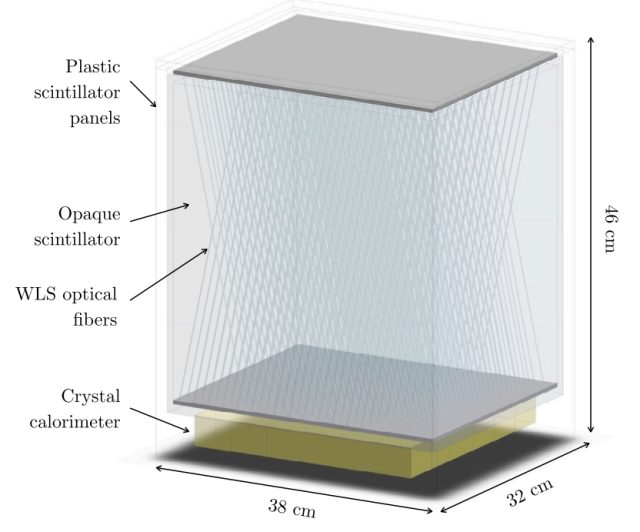Unlocking the universe’s hidden light: The COCOA Telescope
Deep in the heart of exploding stars and colliding neutron stars lies a hidden light we’ve barely glimpsed — gamma rays in the mega-electron-volt (MeV) range. These elusive rays, carrying clues about cosmic explosions and mysterious phenomena like dark matter, have been hard to study due to technological limits. Enter COCOA 1, a compact, innovative telescope designed to reveal the secrets of this “MeV gap” with unprecedented precision. Here’s how this small but mighty detector could transform our view of the cosmos.
What is the MeV gap?
The universe emits gamma rays across a wide range of energies, but those in the MeV range (roughly 0.1 to 100 MeV) are notoriously difficult to detect. Unlike lower-energy X-rays, which are caught by focusing mirrors, or higher-energy gamma rays, which pair-produce in large detectors, MeV gamma rays rely on a process called Compton scattering. This is like a cosmic billiards game: a gamma ray “bounces” off an electron, changing direction and losing energy, which allows scientists to trace its path. However, past telescopes like COMPTEL, launched in 1991, struggled with low sensitivity and bulky designs, leaving the MeV gap largely unexplored.
How COCOA works

COCOA, or COmpact COmpton cAmera, is a revolutionary gamma-ray telescope that fits within a 40 cm cube and weighs just 50 kg. Unlike older, multi-ton telescopes with separated detectors, COCOA uses a cutting-edge LiquidO detection method. Picture a tank filled with a glowing liquid scintillator that lights up when a gamma ray hits it. Woven through this liquid are tiny optical fibers that collect the light and guide it to sensitive sensors called Silicon Photomultipliers (SiPMs), pinpointing the gamma ray’s interaction with sub-centimeter precision. Below this scatterer, a thin layer of crystals, such as thallium-doped cesium iodide (CsI(Tl)), acts as an absorber, capturing the scattered gamma ray’s energy with 2.5% resolution. This compact, cost-effective design achieves four times the effective area of COMPTEL at 1 MeV — meaning it catches four times more gamma rays — and 1.5 times at 10 MeV, with an angular resolution of about 4 degrees, all based on advanced simulations.
Why COCOA matters
MeV gamma rays hold the key to some of the universe’s biggest mysteries. They are produced in cataclysmic events like supernovae and neutron star mergers, where nuclear reactions emit these high-energy photons. When neutron stars collide, for example, they trigger both gravitational waves, detected by observatories like LIGO, and MeV gamma rays, which COCOA could capture to provide a fuller picture of these events. This synergy, called multi-messenger astronomy, could reveal new details about cosmic explosions. COCOA also aims to investigate the “COMPTEL excess,” a mysterious glow of MeV gamma rays from the Milky Way’s center, which could hint at processes like dark matter decay. By probing these phenomena, COCOA could unlock insights into the origins of heavy elements and the nature of the universe’s unseen matter.
COCOA’s mission profiles
COCOA’s compact size makes it versatile for deployment. One option is a high-altitude balloon flight at 35 km, where it can observe gamma rays above much of Earth’s atmosphere. Another is a microsatellite in low Earth orbit (LEO), potentially launched as a rideshare on a commercial rocket. Requiring just 210 watts of power and generating 20 GB of data per day, COCOA is well-suited for these platforms, offering a low-cost alternative to traditional, massive gamma-ray observatories.
A new era for MeV astronomy
By combining innovative LiquidO technology with a compact, cost-effective design, COCOA promises to bridge the MeV gap and bring us closer to understanding the universe’s most energetic events. Its ability to detect gamma rays with high precision in a small package could make it a game-changer for astrophysics, proving that big discoveries can come from small telescopes. As simulations suggest, COCOA’s performance could outshine its predecessors, paving the way for a new era of cosmic exploration.
Author: César Tomé López is a science writer and the editor of Mapping Ignorance
Disclaimer: Parts of this article may have been copied verbatim or almost verbatim from the referenced research paper/s.
References
- LiquidO collaboration, S.R. Soleti, J.J. Gómez-Cadenas et al (2025) COCOA: A compact Compton camera for astrophysical observation of MeV-scale gamma rays Astroparticle Physics doi: 10.1016/j.astropartphys.2025.103135 ↩